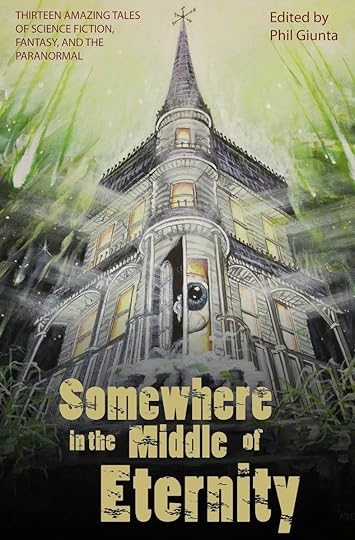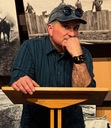Phil Giunta's Blog, page 82
June 18, 2014
Steven H. Wilson Brings the Night To Life in the Middle of Eternity
It was October 1995 at Farpoint, an annual SF media convention in Maryland. There was a writing contest. The winning entry was to be printed in the convention's program book. I submitted my first EVER Star Trek fan fiction short called A Passion for Peace wherein Kirk and crew rescue a Romulan defector near the beginning of their five year mission. Her tale of a peace movement on Romulus leads Spock to begin pondering the idea of a reunification of Romulans and Vulcans.
I did not win and I was, of course, disappointed...until I ran into Steven H. Wilson, co-founder of Farpoint, fellow fan fiction author, and writer for DC Comics Star Trek and Warlord issues. He assured me that I had been a top contestant and encouraged me to keep writing.
So I did...and over the years, Steve and I remained in contact and saw one another at the Maryland conventions. He has never been anything less than encouraging and as a writer, Steven has shown talent and temerity, ambition and genius. He is the creator of the Parsec and Mark Time award winning podcast site, Prometheus Radio Theatre which delivers original SF, Fantasy, and Horror audio shows and books and has amassed a large following.
Steven's publishing imprint, Firebringer Press, has grown its titles substantially over the past several years, publishing both of my novels as well as Steven's Arbiter Chronicles adventures and Lance Woods's Heroic Park (and since Lance is a contributor to our upcoming anthology, he will be interviewed here next week). This August, Firebringer will publish its first anthology.
Somewhere in the Middle of Eternity will contain 13 tales of science fiction, fantasy, and the paranormal written by eight authors and edited by yours truly. Each story will be accompanied by a black and white illustration provided by phenomenal artist Mike Riehl, who also created our gorgeous cover.
Steve will be one of the authors joining us at Shore Leave where we will launch the anthology during the Friday evening Meet the Pros party. It will then be available in paperback and eBook from Amazon, B&N.com, Smashwords, and just about every online bookseller.
Now, let's catch up with Steve!
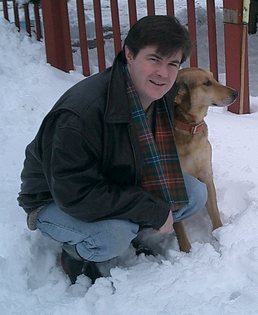
Most writers have at least one established author who inspired them. Would you share with us some of the authors who influenced you?
Robert A. Heinlein, of course. Ayn Rand, even though that's not trendy. Ray Bradbury, Alan Dean Foster, L. Neil Smith, Edgar Rice Burroughs... a lot, really. I also love the films of Frank Capra, especially when scripted by the wonderful Robert Riskin. Star Trek and a lot of 70s SFTV also inspired me. And I'm a huge admirer of Thomas Jefferson and his ideals. Writing is about ideas, after all. My mind is always stimulated when I encounter any creative work which advocates freedom, compassion, individual accomplishment and competence, be that work a novel, a movie, a TV show or a Declaration of Independence.
Since our last interview, you released your third SF novel, Unfriendly Persuasion, based on characters from your Mark Time and Parsec award-winning audio series, The Arbiter Chronicles. Can you give us a blurb about the story?
Unfriendly Persuasion tells the story of a young war hero, Terry Metcalfe, who's a very reluctant warrior. He's lauded for saving the lives of billions, but he had to kill to do it, and that doesn't sit well with him. When he comes upon a planet of peace-loving people who think they've found God incarnate on their world, he's ready to leave the military and settle down as a pacifist farmer. Unfortunately for Terry, "God" turns out to be a new problem for him to solve, not a solution.
For listeners, Unfriendly Persuasion picks up where the second series of Arbiter Chronicles episodes left off. For non-listeners, the novel opens with the events from the end of the series being related by Metcalfe's arch-nemesis, Sestus Blaurich.
In the latter half of 2013, you released the first four episodes of The Arbiter Chronicles as eNovellas. What prompted the decision to do that? Do you plan to continue?
Several things prompted me to do that. One, a lot of reviews of my Arbiters novels made it clear that many readers weren't hearing the audio dramas, and they wanted to know the previous adventures of these characters. I realized that my audiences were split. Some wanted just prose adventures. So I decided to adapt my radio scripts as novellas. That also gives me the chance to write those early adventures again, knowing what I know a decade and a half after beginning to write their audio adventures. I get to embroider a bit on the original stories. I'm hoping it will expand the audience for the Arbiters.
Continue? Yes. I'll do the next four soon. Ultimately, I want to release all eight of the first series of stories as a hardcover.
Tell us what inspired your magical story, “Don’t Go in the Barn, Johnny!” for our anthology.
Okay, now you're making me go back in time quite a ways. I wrote that thing during my first semester of college, 31 years ago. I was a fanatical jogger then, before I gave myself stress fractures and had to quit. Weather didn't stop me from getting out and running, and some nights, running in (then) rural Clarksville, MD, I would practically freeze my ears off. I would often jog past this magnificent, creepy old barn on Simpson Road, where I grew up. It was surrounded by old trees, we're talking Civil War era here, which seemed to come alive at night. It was as if the night had its own kingdom. And, because I was just 18 and perpetually horny, it seemed to me that, in the depths of that nightmare kingdom, there had to be a beautiful, sinister princess, waiting to claim an innocent young man who strayed into her realm. It's really an erotic fantasy without dirty words. In 2013, when I took it into my head to start writing some short fiction again, I dusted that story off. It was my favorite work from my Freshman honors English class, and I decided it deserved to (pardon the pun) see the light of day.
What can readers expect next from you?
Excuses, mostly. Right now I do not have another book in me. I will again, but not in the immediate future. I know what the next two or three Arbiters novels will be, but I'm not ready to write them. So I think I'm going to focus on shorter works, try to get into some magazines and anthologies. I really want to right six more episodes of the Arbiters audio adventures and get them published, plus the novellas. I might do something with some one-off characters I've created, like my nameless, libertarian vampire and Mura, the gypsy girl with her golem boyfriend. And I might do a sequel to Peace Lord of the Red Planet. Just not sure.
What does Steve Wilson do when he isn’t writing?
I write more. Seriously, I hang out with my family, because that's important. I read quite a bit. I'm crazy about books. When I'm depressed, I self-medicate by buying books. Oh, and I have a couple of jobs that pay the bills. I'm CIO for a metropolitan fire department, which is very challenging and keeps me very busy. And, of course, I'm publisher for Firebringer Press, and I blog weekly and do some podcasting.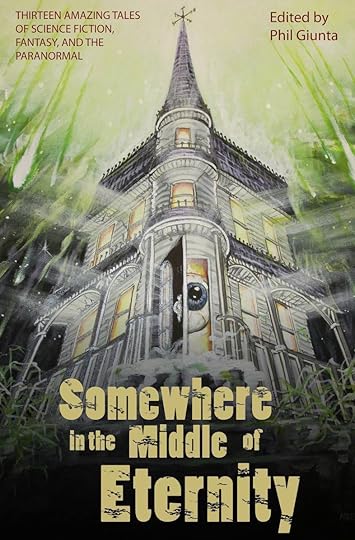
Steven H. Wilson Brings the Night Alive in the Middle of Eternity
It was October 1995 at Farpoint, an annual SF media convention in Maryland. There was a writing contest. The winning entry was to be printed in the convention's program book. I submitted my first EVER Star Trek fan fiction short called A Passion for Peace wherein Kirk and crew rescue a Romulan defector near the beginning of their five year mission. Her tale of a peace movement on Romulus leads Spock to begin pondering the idea of a reunification of Romulans and Vulcans.
I did not win and I was, of course, disappointed...until I ran into Steven H. Wilson, co-founder of Farpoint, fellow fan fiction author, and writer for DC Comics Star Trek and Warlord issues. He assured me that I had been a top contestant and encouraged me to keep writing.
So I did...and over the years, Steve and I remained in contact and saw one another at the Maryland conventions. He has never been anything less than encouraging and as a writer, Steven has shown talent and temerity, ambition and genius. He is the creator of the Parsec and Mark Time award winning podcast site, Prometheus Radio Theatre which delivers original SF, Fantasy, and Horror audio shows and books and has amassed a large following.
Steven's publishing imprint, Firebringer Press, has grown its titles substantially over the past several years, publishing both of my novels as well as Steven's Arbiter Chronicles adventures and Lance Woods's Heroic Park (and since Lance is a contributor to our upcoming anthology, he will be interviewed here next week). This August, Firebringer will publish its first anthology.
Somewhere in the Middle of Eternity will contain 13 tales of science fiction, fantasy, and the paranormal written by eight authors and edited by yours truly. Each story will be accompanied by a black and white illustration provided by phenomenal artist Mike Riehl, who also created our gorgeous cover.
Steve will be one of the authors joining us at Shore Leave where we will launch the anthology during the Friday evening Meet the Pros party. It will then be available in paperback and eBook from Amazon, B&N.com, Smashwords, and just about every online bookseller.
Now, let's catch up with Steve!

Most writers have at least one established author who inspired them. Would you share with us some of the authors who influenced you?
Robert A. Heinlein, of course. Ayn Rand, even though that's not trendy. Ray Bradbury, Alan Dean Foster, L. Neil Smith, Edgar Rice Burroughs... a lot, really. I also love the films of Frank Capra, especially when scripted by the wonderful Robert Riskin. Star Trek and a lot of 70s SFTV also inspired me. And I'm a huge admirer of Thomas Jefferson and his ideals. Writing is about ideas, after all. My mind is always stimulated when I encounter any creative work which advocates freedom, compassion, individual accomplishment and competence, be that work a novel, a movie, a TV show or a Declaration of Independence.
Since our last interview, you released your third SF novel, Unfriendly Persuasion, based on characters from your Mark Time and Parsec award-winning audio series, The Arbiter Chronicles. Can you give us a blurb about the story?
Unfriendly Persuasion tells the story of a young war hero, Terry Metcalfe, who's a very reluctant warrior. He's lauded for saving the lives of billions, but he had to kill to do it, and that doesn't sit well with him. When he comes upon a planet of peace-loving people who think they've found God incarnate on their world, he's ready to leave the military and settle down as a pacifist farmer. Unfortunately for Terry, "God" turns out to be a new problem for him to solve, not a solution.
For listeners, Unfriendly Persuasion picks up where the second series of Arbiter Chronicles episodes left off. For non-listeners, the novel opens with the events from the end of the series being related by Metcalfe's arch-nemesis, Sestus Blaurich.
In the latter half of 2013, you released the first four episodes of The Arbiter Chronicles as eNovellas. What prompted the decision to do that? Do you plan to continue?
Several things prompted me to do that. One, a lot of reviews of my Arbiters novels made it clear that many readers weren't hearing the audio dramas, and they wanted to know the previous adventures of these characters. I realized that my audiences were split. Some wanted just prose adventures. So I decided to adapt my radio scripts as novellas. That also gives me the chance to write those early adventures again, knowing what I know a decade and a half after beginning to write their audio adventures. I get to embroider a bit on the original stories. I'm hoping it will expand the audience for the Arbiters.
Continue? Yes. I'll do the next four soon. Ultimately, I want to release all eight of the first series of stories as a hardcover.
Tell us what inspired your magical story, “Don’t Go in the Barn, Johnny!” for our anthology.
Okay, now you're making me go back in time quite a ways. I wrote that thing during my first semester of college, 31 years ago. I was a fanatical jogger then, before I gave myself stress fractures and had to quit. Weather didn't stop me from getting out and running, and some nights, running in (then) rural Clarksville, MD, I would practically freeze my ears off. I would often jog past this magnificent, creepy old barn on Simpson Road, where I grew up. It was surrounded by old trees, we're talking Civil War era here, which seemed to come alive at night. It was as if the night had its own kingdom. And, because I was just 18 and perpetually horny, it seemed to me that, in the depths of that nightmare kingdom, there had to be a beautiful, sinister princess, waiting to claim an innocent young man who strayed into her realm. It's really an erotic fantasy without dirty words. In 2013, when I took it into my head to start writing some short fiction again, I dusted that story off. It was my favorite work from my Freshman honors English class, and I decided it deserved to (pardon the pun) see the light of day.
What can readers expect next from you?
Excuses, mostly. Right now I do not have another book in me. I will again, but not in the immediate future. I know what the next two or three Arbiters novels will be, but I'm not ready to write them. So I think I'm going to focus on shorter works, try to get into some magazines and anthologies. I really want to right six more episodes of the Arbiters audio adventures and get them published, plus the novellas. I might do something with some one-off characters I've created, like my nameless, libertarian vampire and Mura, the gypsy girl with her golem boyfriend. And I might do a sequel to Peace Lord of the Red Planet. Just not sure.
What does Steve Wilson do when he isn’t writing?
I write more. Seriously, I hang out with my family, because that's important. I read quite a bit. I'm crazy about books. When I'm depressed, I self-medicate by buying books. Oh, and I have a couple of jobs that pay the bills. I'm CIO for a metropolitan fire department, which is very challenging and keeps me very busy. And, of course, I'm publisher for Firebringer Press, and I blog weekly and do some podcasting.
June 17, 2014
Stuart S. Roth Brings a "Deluge" of "Obligations" to the Middle of Eternity
For our upcoming anthology, Stu penned two phenomenal stories. The first is a heartwarming fantasy set in World War II Japan and the other is an SF/mystery from a distant planet.
To be published by Firebringer Press in August, Somewhere in the Middle of Eternity will contain 13 tales of science fiction, fantasy, and the paranormal written by eight authors and edited by yours truly. Each story will be accompanied by a black and white illustration provided by phenomenal artist Mike Riehl, who also created our gorgeous cover.
Stu will be one of the authors joining us at Shore Leave where we will launch the anthology during the Friday evening Meet the Pros party. It will then be available in paperback and eBook from Amazon, B&N.com, Smashwords, and just about every online bookseller.
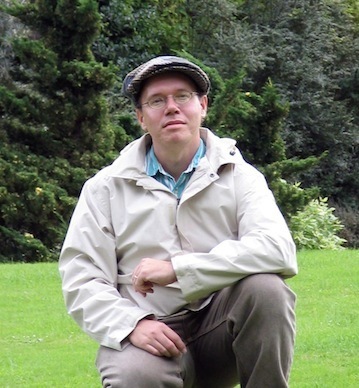
Most writers have at least one established author who inspired them. Would you share with us some of the authors who influenced you?
For pure world building, I would say Frank Herbert’s Dune Series was my greatest influence. The depth of the world he created was amazing. Arthur C. Clarke (notably Childhood’s End and Rendezvous with Rama) was another influence. In terms of storytelling, John Wyndham (Day of the Triffids, Chocky, Midwich Cuckoos) and Stephen King (Salem’s Lot and the Shining notably) have great voices. Finally, Hiroyuki Agawa’s biography of Admiral Yamamoto provided an interesting “character sketch” that made an impression on me.
I remember our days working together in fan fiction, where so many genre writers got their start, whether they want to admit it or not. You served as both editor and contributor to the Norman fanzine and it was a joy working with you then and I’m excited to do so now on a professional level. What fan fiction did you most enjoy writing and why?
I will always remember the days working on Norman. We produced 12 issues, I was involved with 6 of them. Fanzines teach you project skills, deadlines and are great opportunities to interact with fellow writers and artists. They can also be frustrating at times. Fanzines are not businesses, they are circles of friends. Sometimes the product that comes out is a bit raw. Authors, including myself, can be prickly and sometimes there are disagreements. Other times, the collaboration works out brilliantly and everyone is happy. Anyway, I ramble. To answer your question, Doctor Who was my favorite genre. The scope of the series is so broad that I could always find a Doctor and period to write about.
You have two brilliant stories in our anthology, “Deluge” and “The Obligation of Kitsune” which our publisher, Steven H. Wilson, has called a masterpiece. Please tell us what inspired each of these tales.
Deluge is a pure science fiction tale. I have always been intrigued by how life would develop on another planet. Deluge is about evolution on another planet and how a predator functions in such an environment. The inspiration came from the expression “like lemmings to the sea”.
Kitsune is a hybrid of Japanese mythology stories surrounding foxes. In Japanese literature foxes play many parts, some evil, some good. In The Obligation of Kitsune, we learn that even in great world conflagrations, a fox still has its obligations to meet.
What can readers expect next from you?
Recently, I completed a novel about the interaction between two realities. As humanity reaches out into space, we discover that first contact comes from an unexpected place, our own minds. With luck, you will hear more about Myomria in the near future.
What does Stuart Roth do when he isn’t writing?
I’m happily married to my beautiful wife, Maria. We enjoy travel, barbecues, hiking, and visiting local arboretums. My daytime job is in the non-fiction world of finance and accounting. If there is one creative endeavor that rivals storytelling for me, it is creating a good excel spreadsheet – I mean a good one, one that does what it is supposed to do. You have to grab your thrills where you can find them.
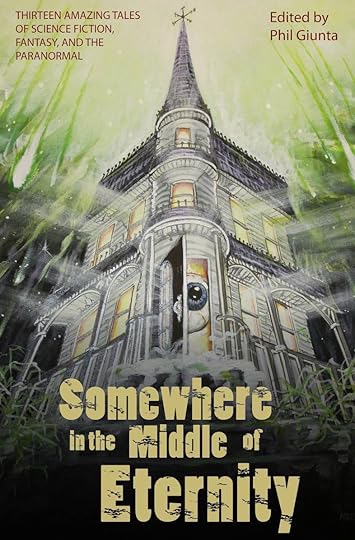
June 16, 2014
Book Review: The Puppet Masters by Robert Heinlein
Led by an inscrutable veteran known only as the "Old Man", agents "Sam" and "Mary" quickly find themselves facing an insidious and calculating alien parasite. As a result of its method of joining with its host, a law called Schedule Bare Back is eventually passed, dictating that all citizens must go topless. Women are allowed to wear bras, but no more.
During a meeting of the entire intelligence staff, all are ordered to strip down to the buff, revealing that one of the office assistants had been compromised. The "slug" manages to escape and eventually possesses Sam. Under alien influence, he quickly dresses and flees the agency--but not without a witness. Sam finds himself unwittingly assisting the aliens with possessing a key member of the US government in an attempt to get to the President himself.
Mary and the Old Man thwart the plot, but once apprehended and freed of his "master", Sam threatens to quit the agency. The experience was simply too much for him. He is convinced to remain when the Old Man informs him that a captured "slug" is to be interrogated. In order to do so, however, Mary agrees to become a host. Sam, now in love with her, objects and reluctantly takes her place.
Armed with the footage of this interrogation, the agents meet with the President of the United States. Alerted to this new threat, the President seeks out assistance from the UN. Meanwhile, more ships from Titan have arrived and nearly the entire midwestern United States has fallen under the control of the parasites. The military engages in active war with the invaders, but the aliens multiply at a phenomenal rate.
Can the agents devise a way to stop the "slugs" before the entire world is overrun? Who exactly is the Old Man and what is his relationship to Sam? Will Sam and Mary eventually find love in one another?
If your answer to these questions is "who cares?", that's about how I felt while reading this. The story felt like a mash up of Invasion of the Body Snatchers and War of the Worlds, especially given the method used to defeat the aliens. While the plot barely held my attention, the characters were shallow. Even the Sam, the POV character, seemed to spend more time lamenting his situation and oscillating between passive-aggressive treatment of Mary.
Although written in 1951, the story begins in 2007 and while I fully understand how women were treated in American society of the mid-twentieth century, the patronizing, chauvinistic attitude of Sam toward the equally--and sometimes considerably more--capable agent Mary was embarrassing. Heinlein introduces her as a strong match for Sam, but by the end of the book, she is little more than a submissive female, bending to his wishes with a "yes, dear" every other chapter.
All told, The Puppet Masters proved to be one of Heinlein's weaker efforts, in my humble opinion. This was a book I had no problem putting down for weeks before picking it up again simply because I'm not inclined to leave chores unfinished. My recommendation: skip it.
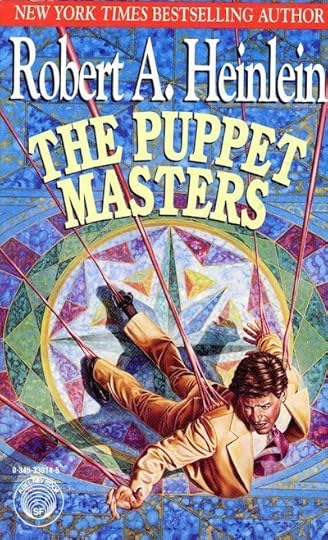
June 10, 2014
About This Writing Stuff...
Beyond that, I prefer to spend most of this blog post focusing on craft. How should you avoid opening your novel? Let Ramona DeFelice Long count the ways. Kristen Lamb gives us the short and skinny on log lines. Jordan Dane provides serious advice about humor while Jami Gold encourages us to write with all eleven senses (yes, you read that correctly, eleven). From The Write Practice, we get tips on writing under duress and go back to basics with sentence structure. Enjoy!
Twelve Terrible Ways to Open a Novel by Ramona DeFelice Long
The Case Against Author Solutions Part 1: The Numbers by David Gaughran
I Understand and Sympathize by Joe Konrath
Expand Our Senses and Improve Our Descriptions by Jami Gold
How to Tell if Your Story is On Target--What is Your Book About in One Sentence? by Kristen Lamb
Five Ways to Stand Out with Humor in Your Writing by Jordan Dane
How To Write Through Duress by Birgitte Rasine
Why Your Writing Sounds Weird (And What You Can Do About It) by Joe Bunting
June 7, 2014
Susanna Reilly "Dreams" of "Form and Substance" in the Middle of Eternity
I'd hoped to have the honor of being the first to publish Susanna’s work, but the Main Line Writers Group got the jump on me with their wonderful anthology, Unclaimed Baggage . Nevertheless, I am proud to include not one, but two wonderful SF tales from Sue in our upcoming collection, Somewhere in the Middle of Eternity, to be published by Firebringer Press.
The book will contain 13 fantastic tales of science fiction, fantasy, and the paranormal written by eight authors and edited by yours truly. Each story will be accompanied by a black and white illustration provided by phenomenal artist Mike Riehl, who also created our gorgeous cover.
Susanna will be among the authors joining us at Shore Leave where we will launch the anthology during the Friday evening Meet the Pros party. It will then be available in paperback and eBook from Amazon, B&N.com, Smashwords, and just about every online bookseller.
 Most writers have at least one established author who inspired them. Would you share with us some of the authors who influenced you?
Most writers have at least one established author who inspired them. Would you share with us some of the authors who influenced you?
The first authors I remember going back to over and over again were Ray Bradbury and Agatha Christie. They stoked my interest in the science fiction and mystery genres. As a pre-teen and teen, I gobbled up all the Bobbsey Twins, Nancy Drew and Hardy Boys mysteries I could get my hands on. As a teen I read John Jakes’ North and South series voraciously and discovered, and was awed, by Stephen King’s The Stand, with his deep insights into good and evil, as well as basic humanity.
Reading Star Trek and other TV and movie tie-in novels by authors like Peter David and Keith DeCandido was the genesis for my getting involved with fan fiction writing in my late 20’s and early 30s (see next question). In recent years I’ve had the opportunity to meet a few of these influences in person, but the one who has had the biggest impact on me is Jonathan Maberry, who is now a New York Times best-selling author of the Joe Ledger thriller series and the Rot and Ruin zombie series (as well as a bunch more there isn’t enough room to list). I met him (and his lovely wife Sara Jo) through the Writer’s Coffeehouse, a writer support group with both an on-line presence and in-person meetings once a month. Not only is he an excellent writer of can’t put them down thrillers, he is also an incredibly kind and generous person who is willing to share all that he has learned about writing and the publishing business (which is a whole lot) with other writers. He’s made me think deeply about not only what kind of writer I want to be, but what kind of person.
Along with Stuart Roth, you and I wrote fan fiction in the same circles. What fan fiction did you most enjoy writing and why? Did you find, as I did, that writing fan fiction was an effective training ground for honing your skills as both writer and storyteller?
Stargate SG-1 is my all-time favorite science fiction show, so the stories I wrote in that genre were definitely my favorites. I’ve also written in the Star Trek, Highlander and Law & Order:SVU universes, but the readers seem to agree that my Stargate stories are the most enjoyable. To this day, I still get one or two likes or reviews a month (mostly for my story “Jake” about the high school antics of the O’Neill clone) from my fanfic that is posted at www.fanfiction.net (author name SMR723).
I found that fan fiction was a great training ground because I already had a fully developed world and characters to work with, which allowed me to concentrate on creating the story and perhaps one or two original characters. It also allowed for the stories to be written faster, which minimized frustration and allowed me to complete stories before I got discouraged and gave up. There are so many layers and nuances to good writing that anything that helps make it easier goes a long way to making it better.
Also, working with Stuart Roth and the science fiction club’s production team to get the fanzines published was also an incredible learning experience that helped me understand the ins and outs of the publishing process. That helped a lot with the occasional speed bumps encountered with my professional projects and made the experience less frustrating.
Can you give us a quick blurb about your story, “To Protect and To Serve” in the anthology, Unclaimed Baggage: Voices of the Main Line Writers ?
“To Protect and To Serve” was influenced by the many recent news stories about police officers being hurt or killed in the line of duty. My father was a civilian employee in the law enforcement field for many years, so I grew up with an appreciation for the hard work and dedication of the police officers who are out there every day protecting us. The story is about a middle-aged police officer returning to duty after being shot by a teenager who was on drugs. Since it’s a short story, it’s hard to say any more without giving away plot twists, but I’ve gotten many compliments on the story that are much appreciated. The anthology is available in both print and kindle versions through amazon.com for anyone who is interested. I’ll also be bringing a few copies to Shore Leave with me if anyone would like to stop by our table and pick one up.
You have two fantastic SF stories in our anthology, “Perchance to Dream” and “Form and Substance”. Please tell us what inspired each of these tales.
Thank you for the compliment. I had a lot of fun writing both stories and appreciate having them showcased in your anthology. “Form and Substance” has an interesting history. It actually started out about a dozen years ago as a fan fiction story set in the Star Trek:TNG universe. At the time I wrote it, the fanzine’s editor (hi Stuart Roth!) suggested it could be made into a general science fiction story pretty easily by removing the Star Trek specific references. The idea stayed in the back of my mind, but I never got around to doing anything about it until the opportunity to submit to this anthology came up. It took a lot more tweaking than I initially anticipated, but I’m very happy with the result and hope the readers enjoy it as well.
“Perchance to Dream” was adapted from an idea I had for a story in the Star Trek:Enterprise universe that I never finished writing. It was originally conceived as a flashback story for Tripp Tucker, who was a captive of a species that watched their prisoners’ memories as a form of entertainment. I particularly liked that element and wanted to do something more with it. Once I came up with the idea of the dream researcher who also enjoyed video editing, the rest of the story wrote itself. I’m very pleased with how it turned out and hope the readers agree.
What can readers expect next from you?
Right now I’m working on a story for submission to the Rehoboth Beach Reads short story contest. Longer term, the Main Line Writers Group is considering publishing another anthology in 2015 or 2016 so I have some ideas percolating for that project. Even longer term, I’ve had a novel on the back burner for a little while and am trying to decide whether I’m going to go back and finish it. The subject matter is closer to my Law & Order:SVU fan fiction story than the science fiction/fantasy I usually write, so it is definitely a challenge. But whatever project I’m working on, the most important thing is that it’s fun and brightens my day.
What does Susanna Reilly do when she isn’t writing?
Most of the time working my day job as a legal assistant to a solo practitioner attorney in the Bala Cynwyd, PA area. The rest of the time is divided between spending time with friends and family (especially my two adorable grandchildren, Raiann and Xavier), reading, crafts such as scrapbooking and needlepoint, watching my favorite tv shows and going to the movies. During the summer I spend as many nights as possible at the Rose Tree Summer Festival in nearby Media, PA enjoying concerts under the stars. I also enjoy going to the Farpoint and Shore Leave conventions in Maryland every year.
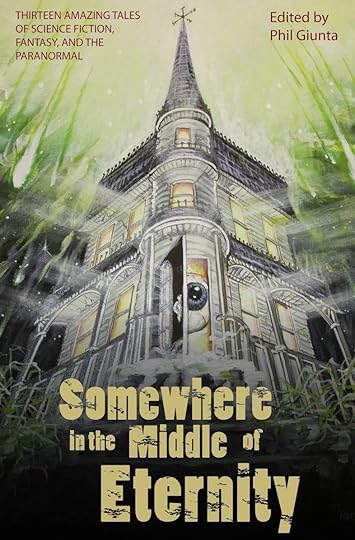
June 5, 2014
Amanda Headlee Brings Death to the Middle of Eternity
The book will contain 13 fantastic tales of science fiction, fantasy, and the paranormal written by eight authors and edited by yours truly. Each story will be accompanied by a black and white illustration provided by phenomenal artist Mike Riehl, who also created our gorgeous cover.
Amanda will be one of the authors joining us at Shore Leave where we will launch the anthology during the Friday evening Meet the Pros party. It will then be available in paperback and eBook from Amazon, B&N.com, Smashwords, and just about every online bookseller.
Let's find out a bit more about this lovely and talented writer...

Most writers have at least one established author who inspired them. Would you share with us some of the authors who influenced you?
H.P Lovecraft has inspired me the most out of all horror authors out there. He took the weird and placed it into a context where it is truly frightening. Not from the fact that these weird or supernatural creatures cause an adverse affect on humanity, but from the point of view that these creatures, they themselves are not the weird. To them, humanity is the weird and strange. I find it absolutely horrific that from the eyes of the human-perceived monster, the humans are the actual monsters.
How did you become involved with The Sarcastic Muse writers blog?
Ah, that is an interesting story! In 2009, I moved from eastern Pennsylvania to Nashville, TN. While in Nashville, I suffered creatively and I think it was because I had no physical writer friends to connect with at the time. I attempted to attend some writers groups, but honestly, my choice of genre was very shunned with those groups. So, I was pretty disheartened and stopped writing.
Later in 2010, I moved to Clarksville, TN, which is about an hour north of Nashville. I began to grow restless with myself from the lack of having creative interaction with others, so I took a chance and joined a writing group at the local Boarders. During my first meeting, I met Kirsten Blacketer. Ironically enough, she and I attended Kutztown University together in 2003-2004. We both did not connect as friends at KU, however we were in a few classes together and we remember seeing each other from there. That night I also met Robyn LaRue. The three of us became fast friends, and surprisingly they both rather enjoyed my macabre mind. I finally felt like I belonged somewhere.
Sadly, the days of this writer’s group only lasted a little over a year. Kirsten and her family ended up moving to Wyoming, Robyn moved to Texas, and for the time being I was still stuck in Tennessee. Since the three of us had a substantial amount of stories that we were trying to get published, Robyn was the one who reached out to Kirsten and I to suggest we create a blog to get ourselves out there in the writing world. And so The Sarcastic Muse was born.
We came up with the idea to have a collaborative blog geared more to the writing process because each of us, along with two other authors who were later on boarded, all brought special knowledge and a unique outlook to writing: Robyn writes in several different genres, Kirsten is all about the romance, Michelle Mueller is into fantasy / sci-fi, Jen Bradlee pens erotica, and I just like to give people nightmares.
For our anthology, you penned a chilling tale of a man haunted since childhood by Death herself. What inspired “Parallax” and what made you choose Ireland as the setting?
Parallax is an old story that I started in college. It actually began with a class project in a short fiction class. The assignment was to write about a setting description that was depicted in our class text. The description that caught my eye was “an abandoned chapel”. Immediately I thought of death and my mind just went from there, conjuring up this reaper that would haunt this man all throughout his life.
As for the title and the little science bit in story, I’m a total Astronomy buff. The day that the writing project was assigned, in my morning Astronomy class, I learned about the concept of parallax. I was floored by the definition of parallax, that when we see an object from our eyes, the object could be altered when we view it from different angles. Obviously, it was something I knew of my whole life, but I did not know the concept had a name. When I discovered the name, I knew parallax had to have a starring role in this story.
As for the setting Parallax in Ireland, I have always had a fascination with Celtic lore and mythology. I feel like tying in some of the Irish mythology along with events that happen abandoned chapel really makes this story haunting. I could not imagine setting this story anywhere else.
What can readers expect next from you?
Currently, I am working on my first novel that delves into a terrifying legend from Native American folklore. I also have several short stories that I am finishing up and looking to submit to some small presses who are looking for submissions to their annual anthologies.
What does Amanda Headlee do when she isn’t writing?
When I am not writing, I am either working at my day job or reading a book from my vast library.
This summer, since I am now living in eastern Pennsylvania again, I plan on getting back into cycling. Tennessee was the worst state to try to cycle on the roads. Tennessean drivers are not as loving towards road cyclists as Pennsylvanian drivers.
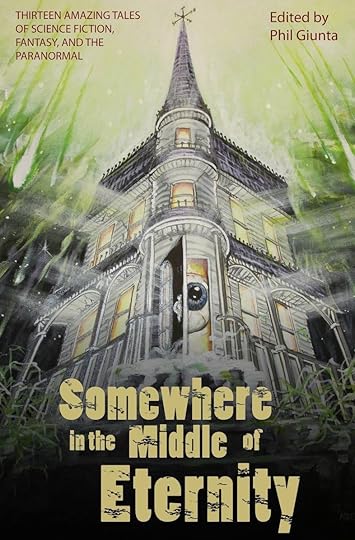
May 26, 2014
Michael Critzer Brings a Bit of Burlesque and Adventure to the Middle of Eternity
To be released in August, Somewhere in the Middle of Eternity will contain 13 fantastic tales of science fiction, fantasy, and the paranormal written by eight incredibly talented authors and edited by yours truly. Each story will be accompanied by a black and white illustration provided by phenomenal artist Mike Riehl, who also created our gorgeous cover.
Seven of the eight writers will be present to launch the book at the Shore Leave SF convention, August 1-3 2014, during the Friday evening Meet the Pros party. It will then be available in paperback and eBook from Amazon, B&N.com, Smashwords, and just about every online bookseller.
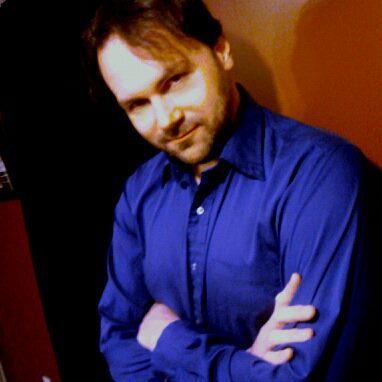
Most writers have at least one established author who inspired them. Would you share with us some of the authors who influenced you?
No matter how I try to educate and condition myself by reading certain types of writers today, I find that my own writing always leans toward the fascination aspect of the stories that captured me as a child. As a literature professor, I probably shouldn’t admit this, but I hated to read as a child, and when I did start, I was on a strict diet of Batman and Archie comic books. But the stories I watched on episodes of Masters of the Universe and reruns of the Twilight Zone always held me captivated. Even though the plots were often contrived, they had a charm which is glaringly absent from so much “literary” fiction. At some point in life, it was fun to realize that the authors I had sought out in other mediums, such as J. Michael Straczynski, Paul Dini, and Charles Beaumont, had also worked on those early TV shows.
While pursuing your MFA, you currently teach Writing and Rhetoric at James Madison University with an eye toward teaching creative writing. What attracted you to the MFA program?
Unfortunately, small pieces of paper with university seals on them are a necessity for job security in the academic field. Once I completed my Masters in English, I decided I’d had enough of soul sucking literary theory (a systematic stripping away of all the pleasure and delight that literature has to offer), so a PhD was off the table, and I wanted to get serious about my creative writing, so an MFA was the logical route. I was then extremely lucky to stumble onto Spalding University’s low residency MFA program, which enabled me to keep my day job but study with some of the finest working authors currently teaching. Sena Naslund (of Ahab’s Wife and Adam and Eve fame) is the program director, and I’ve so far had the privilege of working with such award winning authors as Pete Duval, John Pipkin, and Mary Clyde. My writing has grown enormously, and I highly recommend the program to any writer now, regardless of their professional aspirations.
Tell us about your story “Sirena” in the anthology, Quixotic: Not Everyday Love Stories . How did you become involved in the anthology?
I received the invite to submit from one of the editor’s, my friend and talented horror author Lindsey Beth Goddard. I had written “Sirena” after studying Mary Shelly’s Frankenstein and various Poe tales, hence the insane narrator and the twisted “creation” aspect of the tale. I’m a little obsessed with the theme of creating the people, places, and situations around us by the projections of what we want or need them to be. That’s the nature of fiction writing anyway, right? It gets my characters into all kinds of trouble, which I hope makes for fun stories.
For Somewhere in the Middle of Eternity, you penned two unique stories. “Thorn” is an urban fantasy while “Evelyn” is a story of obsession and tragedy. What inspired these very different tales?
I’ve always wanted to write about superheroes, but it took me a while to find a story to tell. Then the debate resurfaced on my facebook newsfeed about the representation of women in comic books. I decided that instead of ranting about my viewpoint on facebook for days, I would spend the energy justifying the appearance of superheroines in a short story with character development instead of entrenching debate.
“Evelyn” was my first foray into steampunk. The genre never appealed to me until I became a fan of the band Valentine Wolfe out of South Carolina. They describe themselves as steampunk, but wrote something on their site about being the Victorian, gas-lit alley side of the genre rather than the mad scientists in flying Zeppelins. The gothic version appealed to me, and the story of an ill-fated, opium brothel patron began to take shape.
What can readers expect next from you?
I have two projects in the works now, and it’s anyone’s guess which one will be finished first. I’m revising a sword and sorcery novel, and I’m also writing and revising more of those relationship/projection stories for a collection entitled Lovers and Strangers. Some of those stories will be appearing on online journals and other places this coming year. I post updates on facebook at AuthorMichaelCritzer and on Twitter @MichaelCritzer.
What does Michael Critzer do when he isn’t writing?
Mostly I just feel guilty about not writing, but reading and video games do take the edge off.
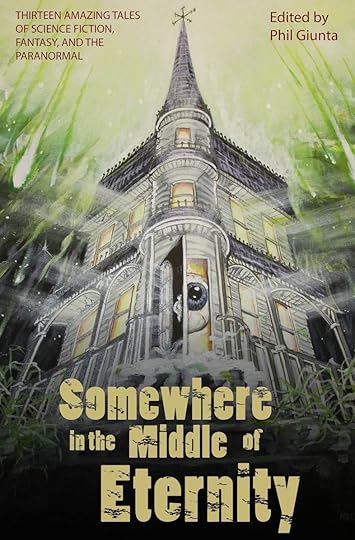
About This Writing Stuff...
All that and a little more. Enjoy!
As Publishers Fight Amazon, Books Vanish by David Streitfeld and Melissa Eddy
How Book Publishers Can Beat Amazon by Bob Kohn
Amazon Boycott Gets a Helping Hand from Stephen Colbert by David Streitfeld
The War on Amazon is Big Publishing's 1% Moment. What About Other Writers? by Barry Eisler
Konrath vs. Colbert by Joe Konrath
How to Write Poetic Prose: The Sounds of Words by Michelle Mueller
Writing Agreement #1: Be Impeccable with Your Word by Kathryn Craft via Jenny Hansen
Do You Know How to Edit AND Proofread Your Story? by Jenny Hansen
Why Deadlines Matter by Bob Greenberger
How Bova, Sturgeon, Meyer, and Ellison Influenced Me by Bob Greenberger
Daniel Patrick Corcoran Goes "Apartment Hunting" in the Middle of Eternity
The anthology will launch at Shore Leave 36 , a science fiction convention occurring the first weekend in August. It will then be available in paperback and eBook from Amazon, B&N.com, Smashwords, and just about every online bookseller.
Kicking off our interview series is Daniel Patrick Corcoran, author of the satirical vampire tale, "Apartment Hunting."
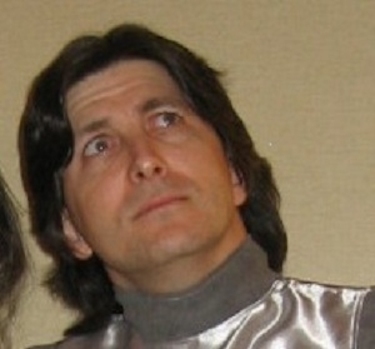
Most writers have at least one established author who inspired them. Would you share with us some of the authors who influenced you?
Robert Asprin is the first that comes to mind. Another Fine Myth was the book that I had kicking around my house for the longest time as a kid. It was set in a fantasy world, but mainly it was funny for the sake of being funny and it showed me what you could really do with a story. When he teamed up with Phil Foglio as illustrator, it just added a level of richness to the humor that really set a standard for me. A level that was unmatched until I discovered Terry Pratchett, with his use of footnotes and other techniques to tell good stories that were also hilarious.
You’ve written or co-written live comedy plays that have been performed at the Maryland SF conventions such as Farpoint and Balticon . How did you become involved in that?
Same way I became involved in fandom in the first place: my cousin. When I was sixteen she called me up and asked me to go to a science fiction convention that weekend (Balticon 20). At that convention, she met the lead singer of a humorous filk group called the Boogie Knights. The same group was involved in performing those comedic plays, and through her, I started hanging out with them. That eventually led to being offered small roles which led to larger roles and eventually writing and producing some of the plays myself.
For our anthology, you penned a light-hearted tale about a bumbling vampire with a therapist. What inspired “Apartment Hunting”?
It actually evolved from the plays, which at the conventions are usually parodies intended to be performed once or twice. I was kicking around the idea of trying to come up with some sketch comedy that could be performed in other venues or on a more regular basis, a la Kids in the Hall. This led me to the idea of a recurring character that could be used in recurring situations. The first idea I came up with was a vampire, so I asked myself how you make a vampire funny. The simple answer is to make him not as suave as he thinks he is. This led me to picturing the silhouette of a vampire in a patio door. I pictured him opening the glass door and then walking right into the screen. In other situations he could trip over the furniture. Or he could start at a grand piano and as he steps away from it he could pull off the candelabra and tea set that had been set on his cape. I really fell in love with the idea and just to make sure that something was done with it I fleshed it out into a story.
What’s next for you?
Good question. I have a humorous fantasy novel I’ve been working on. I have had other stories published in other small venues in the past. I enjoy going in the opposite direction of what is expected. I have written stories that take a standard topic and I give it a very humorous treatment. I have written stories based on a humorous topic and they turned out dramatic and horrific. I am not without ideas, what the future brings depends on personal discipline and fickle opportunity.
What does Daniel Patrick Corcoran do when he isn’t writing?
I’m not even sure who that is. My friends and family have been calling me Renfield for over twenty years. My wife wanted me to use it for the anthology, but I figured I could not get away with using it as a byline on a vampire story. Now I’m afraid that I’ll have to work that much harder to get my friends to read the book since they might not recognize I’m in it. That actually brings me back to Bob Asprin. A few years ago I shared this exact concern with him when I met him at a convention. He related how he used to be heavily involved in the convention scene in his youth, and had a fan name of his own. Once his books started getting famous, he was at an autograph table signing books when the next guy in line walked up to him and said, “Hi, Kang.” In that moment, Bob Asprin felt like a huge jackass because he realized that he had a built-in market for his books that he never bothered exploring. But if you’re asking me what I do in my spare time, while the plays have fallen by the wayside, I am still very active in the Baltimore convention scene. I can often be found helping with the Art Show at Farpoint , helping with the masquerade at Balticon , and propping up the bar at Shore Leave .
